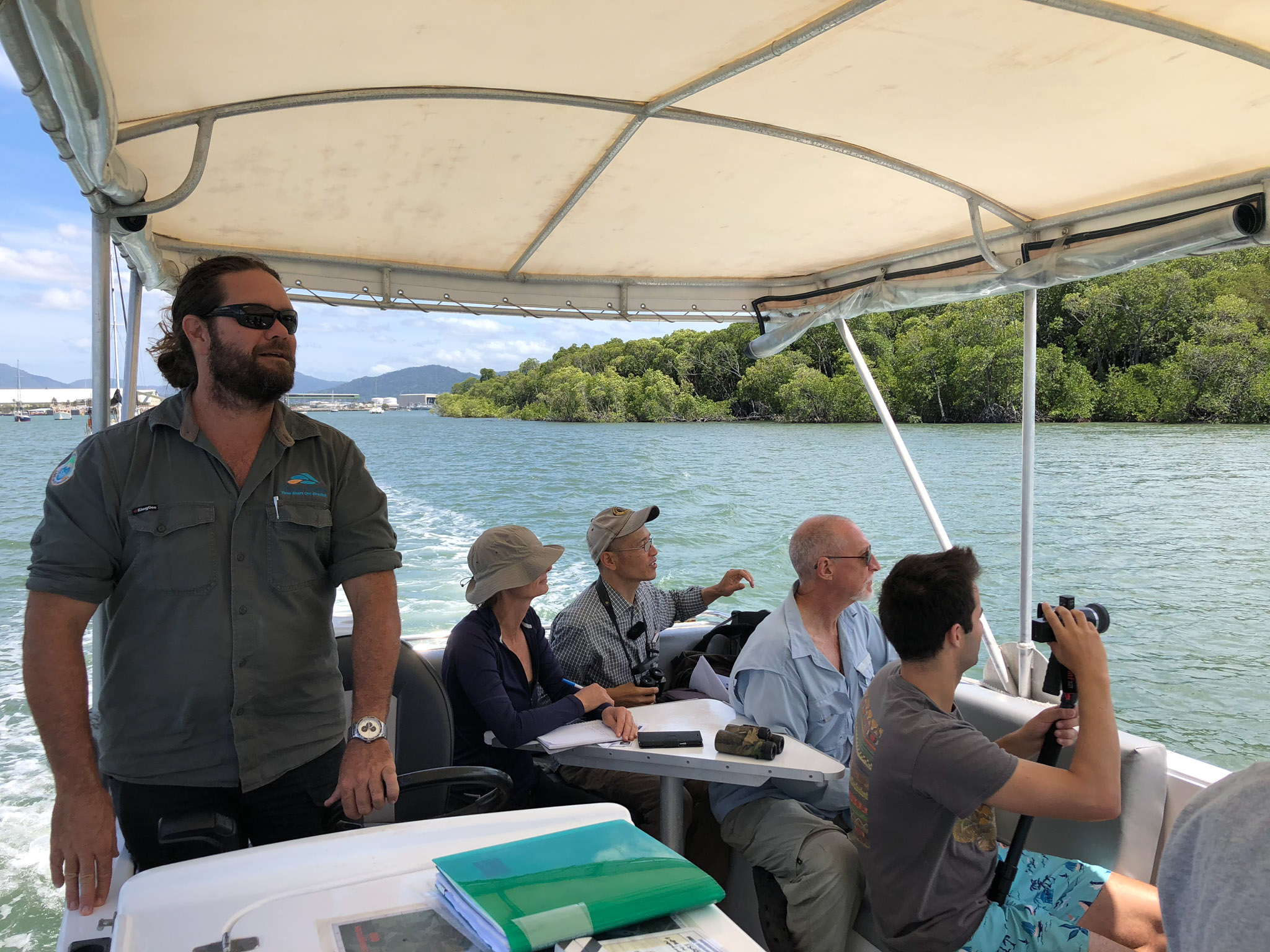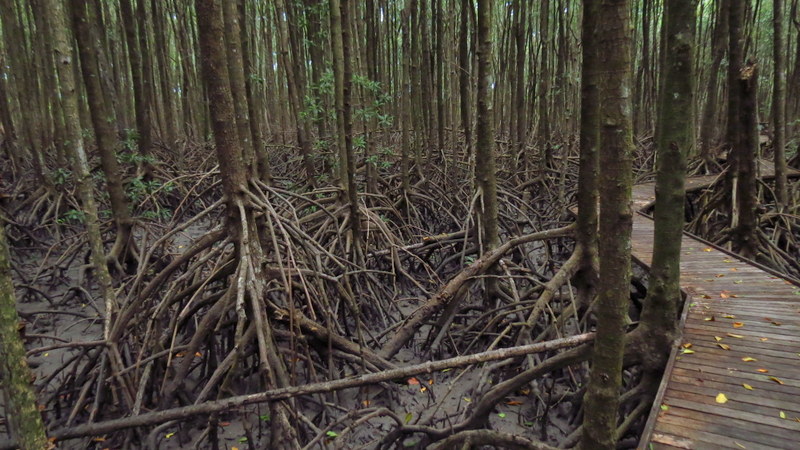We’ve been running monitoring sessions in Far North Queensland estuaries since 2019 and will continue to monitor between now at 2023. The data we collect gives us the opportunity to inform on-ground action plans responding to estuary-specific threats. How do we get the data? You’re about to learn what it takes to plan a MangroveWatch monitoring session.
.

Citizen scientists in action on the Barron River.

Stilted Mangroves next to the Jack Barnes Boardwalk in Cairns near the airport.
When is the best time to monitor Mangroves? The dry season. Between April and October are generally the best monitoring times with more predictable weather patterns. So that leaves about 6-7 months to get on the water and collect data. Not so fast. We have to consider the tides. Any good boater will know what the conditions are going to be like before getting on the water. The best tide to go out for MangroveWatch is on a rising tide or sometime around what’s called a neap tide. Neap tide happens twice a month and occurs when high tides are a little lower than average and low tides are a little higher than average. I go to willyweather.com to check on the tides to determine when is the ideal time to monitor. What does this look like? It’s best to start at the mouth of the estuary and travel upstream on a rising tide to avoid running aground or getting stuck in shallow water.
A rising tide may happen in the morning or afternoon and with that, you will have to determine the position of the sun at that time of day. We cannot collect good quality data if we are shooting into the sun because the glare interferes with the picture. It is best to film with the sun on our backs. For example, if the rising tide is in the morning and we are traveling north upstream, we will film on the left side of the boat facing the western shoreline.
After a monitoring plan has been put in place we need to resource a boat and a skipper. CAFNEC does not own a boat for MangroveWatch and unless we have the proper facilities to store one or the time to maintain one we never plan to. We rely heavily on volunteers with their own vessel and boating experience to collect data and if we can’t find anyone to donate a vessel we do budget for vessel hire as a last resort.
Now we begin to recruit Mangrove Champions (dedicated volunteers) for data collection. We have 5 roles necessary to complete shoreline video assessment: boat driver, photographer, videographer, GPS operator, and notetaker (plus me as I teach everyone how to do their roles). It’s good to have 5 people, it’s possible with 4, you can get by with 3 on board and combine jobs if necessary. Generally, volunteers are available on the weekend so we need to find a neap tide that happens on a weekend (or close to it) to make the most of the conditions and give volunteers enough time to practice and collect a substantial amount of data.
A few days before we offer a training workshop, we need to make sure the equipment is charged, there is enough space on the memory cards, and we have enough blank data sheets and cheat sheets to guide the process. Don’t forget the first aid kit as well.
After we recruit Champions, we offer a PowerPoint training session as an introduction to the program so that participants feel more prepared to collect the data and identify threats and values in the mangroves more easily.
There have been times when MangroveWatch has been planned for weeks, sometimes months, in advance and then a sudden rainstorm develops the day before and is projected to last for a few more days. We can’t control the weather or the moon so we just reschedule and adapt to the situation. This year has been a demonstration of how climate change has impacted CAFNEC’s ability to do its citizen science work. The wet season usually ends in early April but this year it lasted through May and impacted our monitoring schedule. MangroveWatch is more enjoyable with sunny conditions and no rain to damage the equipment or dampen spirits.
If the conditions are good and we have enough volunteers and resources, a successful MangroveWatch is guaranteed. Volunteers make our work possible so we can always benefit from having locals participate in our work. Volunteers don’t have to have any scientific background or experience, we will teach you everything!

